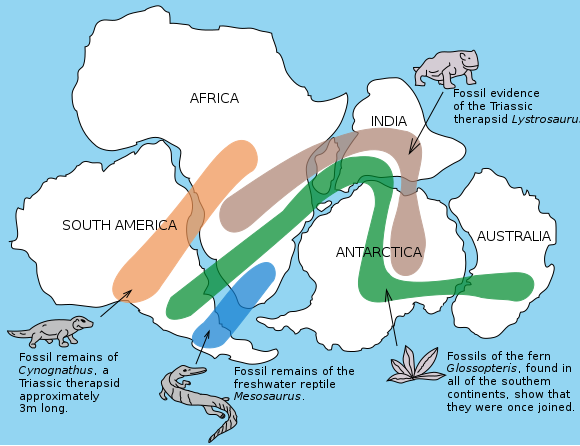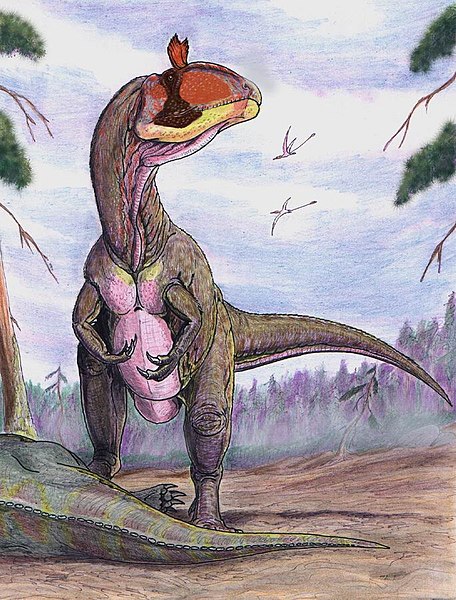Listen to Episode 11 on PodBean, Spotify, YouTube, or pretty much any other podcast place!
Also, we have a Patreon!
In this episode we look at the continent of Antarctica. We discuss its history as a land mass, how its climate has changed, and what fossils have been found there.
In the News:
Baby Bird in Amber
Another discovery of feathered body parts found in Burmese amber from the mines in the Hukawng Valley. Majority of a baby bird has been preserved in amber. For other cool finds from here, check these out: dino tail and bird wings. [News Report]
Genetics Adjust Elephant Family Tree
Research on the genetics of a fossil elephant reveal that the two species of modern African elephants are not as closely related as we thought. [News Report]
Oldest Homo sapiens
New dating research for a H. sapiens skull found in Morocco reveals a much older origin for our species than the previous record. [News Report]
New Data on Cleveland-Lloyd Dinosaur Quarry
New insights into the formation of this famous predator-dominated fossil deposit. [News Report]
Antarctica
As the southern-most continent on our planet, Antarctica is a very unique and unusual place. Exploring this region has more in common with a mission to the moon than your typical Earth-based expedition. Literally.

Though it is known as one of the harshest places on earth today, this was not always the case. Antarctica has gone through some extreme changes both climatically and environmentally.
Geologic History
Much like the rest of the continents, Antarctica has not always been where it is today. In the past, it spent a long time as part of the supercontinent Gondwana, along with Africa, South America, Australia, and the Indian subcontinent.

Gondwana, and therefore Antarctica, was once partially on the equator and therefore had a much warmer and more temperate climate. Over time it moved farther south and the climate cooled, but the overall climate of the earth was much warmer at this time, so even as Antarctica began to move over the south pole, it remained very much habitable, and life was able to thrive there.
During the Mesozoic, Gondwana began to break up as the continents started moving toward their modern positions. By the middle of the Cenozoic, all of the other continents had broken away from Antarctica, leaving it alone on the south pole. Now, ocean currents could freely flow around it, leading to the birth of the Antarctic Circumpolar Current, which kept Antarctica climatically isolated as the Earth entered a long period of much cooler climates. Permanent ice began to take over Antarctica about 15 million years ago, and remains to this day.
Exploration and Discovery
For a long time, early explorers predicted there would be a southern continent, which was called “Terra Australis.” It wasn’t until the late 1700s that Antarctica was first spotted on record, and not until the early 1800s that any person reports landing there.

Expeditions have visited Antarctica ever since. Serving as a unique opportunity for research, Antarctica has been a site of study for geologists, climatologist, astronomers, and of course paleontologists. Paleontological surveys of Antarctica have been fairly rare due to the difficulty of reaching dig sites and the cost required to launch an expedition, but there are organizations dedicated to this research, such as the Antarctic Peninsula Paleontology Project, or AP3, which travels there in search of fossils from the Cretaceous–Paleogene boundary.
Antarctic Fossils
In contrast to the harsh landscape of the continent today, the fossil record reveals a surprising diversity of past life. Fossils include marine invertebrates, birds, mammals, reptiles, amphibians, plants, and dinosaurs.
The first fossils found on Antarctica were plants, an early indication that Antarctica wasn’t always a frozen wasteland. Later on, discoveries like the mammal-relative Lystrosaurus and the seed fern Glossopteris, which are both also found widespread across the other southern continents, helped lend support to the idea that the continents were once connected.


The dinosaurs of Antarctica are rare, and mostly known from fragments. The few well-known dinosaurs include the ankylosaur Antarctopelta, the sauropodomorph Glacialisaurus, and the theropod Cryolophosaurus.

How these dinosaurs survived in a cooler environment that experienced long periods of darkness is still being discussed.
—
If you enjoyed this topic and want more like it, check out these related episodes:
We also invite you to follow us on Twitter, Facebook, or Instagram, buy merch at our Zazzle store, join our Discord server, or consider supporting us with a one-time PayPal donation or on Patreon to get bonus recordings and other goodies!
Please feel free to contact us with comments, questions, or topic suggestions, and to rate and review us on iTunes!
Do you guys think you can talk about the domestication of animals. You guys mentioned selective breeding in the Conservation Paleontology episode, and I’d really like to hear about how the domestication of animals relates to paleontology.
LikeLike
That’s a great suggestion, Michael!
Domestication was actually one of the first topics we put on our to-do list when we started – it’s a fascinating subject. But now that you’ve mentioned it, we’ll bump it up to the official requests list!
LikeLike